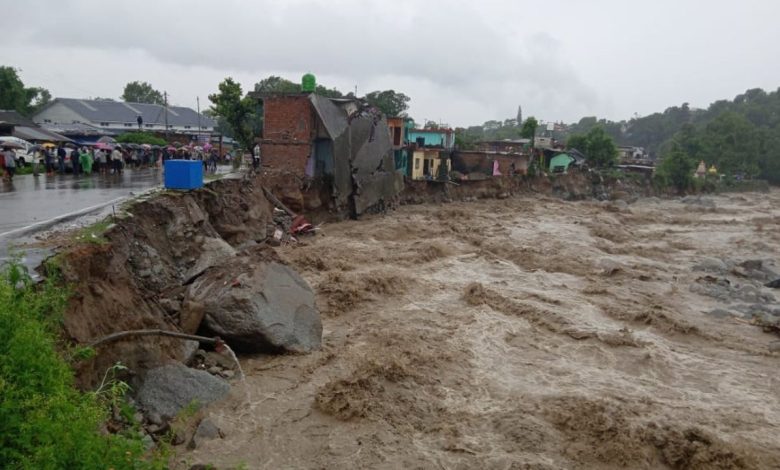
Dr. Seema Javed
The havoc caused by last year’s flood and landslides in Himachal are still fresh in our minds . Once again this year the Monsoon Furry has triggered flash floods and landslides across Himachal Pradesh. Malana Dam on Parvati river broke due to cloud burst and the raging river and flood engulfed everything in the vicinity. This has raised serious concern over The Malana-II hydroelectric project in the upstream of Malana-I barrage on Malana river, about 10 km from Jari village in district Kullu, Himachal Pradesh.

Both meteorologists and climate scientists have been blaming increasing levels of global warming for a steep increase in extreme weather events. The global surface and ocean temperatures have been increasing,resulting in more evaporation. This has aggravated the rain manifold. Indo-Gangetic plains have been receiving lots of moisture from the Bay of Bengal as well as from the Arabian Sea. This continuous supply of moisture feed to the weather systems leads to increased rains, which also results in extreme weather events.
According to The state emergency operation centre said the cloudbursts took place in the Nirmand, Sainj and Malana areas in Kullu, Padhar in Mandi and Rampur in Shimla districts.The rescue operation is challenging as roads have been washed away.The Manali-Chandigarh highway has been damaged at several places due to landslides. At present, extremely heavy rainfall is wreaking havoc. Incessant rains have triggered flash floods and landslides across Himachal Pradesh.
The scale of the rise in extreme weather events in India has been charting new highs with every passing year.Numerous studies have established that the rise in global average temperatures due to human-induced climate change has led to an increase in the number of extreme rainfall events (ERE) associated with monsoon, thunderstorms and short-spanned local cloudbursts.Global warming is making a significant contribution to these extreme events.
The ongoing spell of extremely heavy rains is due to the alignment of three weather systems-Western Disturbance over Western Himalayas, cyclonic circulation over northwestern plains, and Axis of Monsoon trough running across Indo-Gangetic Plains. Which is the usual pattern during the Monsoon.
However, global warming-led changes in Monsoon patterns have made a difference. There has been a constant rise in both land and sea temperatures, which has increased the capacity of the air to hold moisture for a longer time. Thus, the role of climate change in the increasing extreme weather events in India have been strengthening with each passing year. Rising global temperatures, Increase in wildfires releasing more carbon into the atmosphere, greenhouse gases and the unexceptional warming of Arabian Sea, all play a critical role in this phenomena .
According to the Ministry of Earth Sciences report, ‘Assessment of Climate Change over the Indian Region’, overall monsoonal rainfall is projected to become more intense in future, and to affect larger areas mainly due to the increase in atmospheric moisture content with temperature.
The frequency of localized heavy rain occurrences has significantly increased over central India, which is partly attributed to changes in the availability of moisture due to greenhouse gas-based warming, aerosols, stability of the atmosphere and increasing urbanization. Global as well as regional models project an increase in seasonal mean rainfall over India while also projecting a weakening monsoon circulation.
 Jubilee Post News & Views
Jubilee Post News & Views





